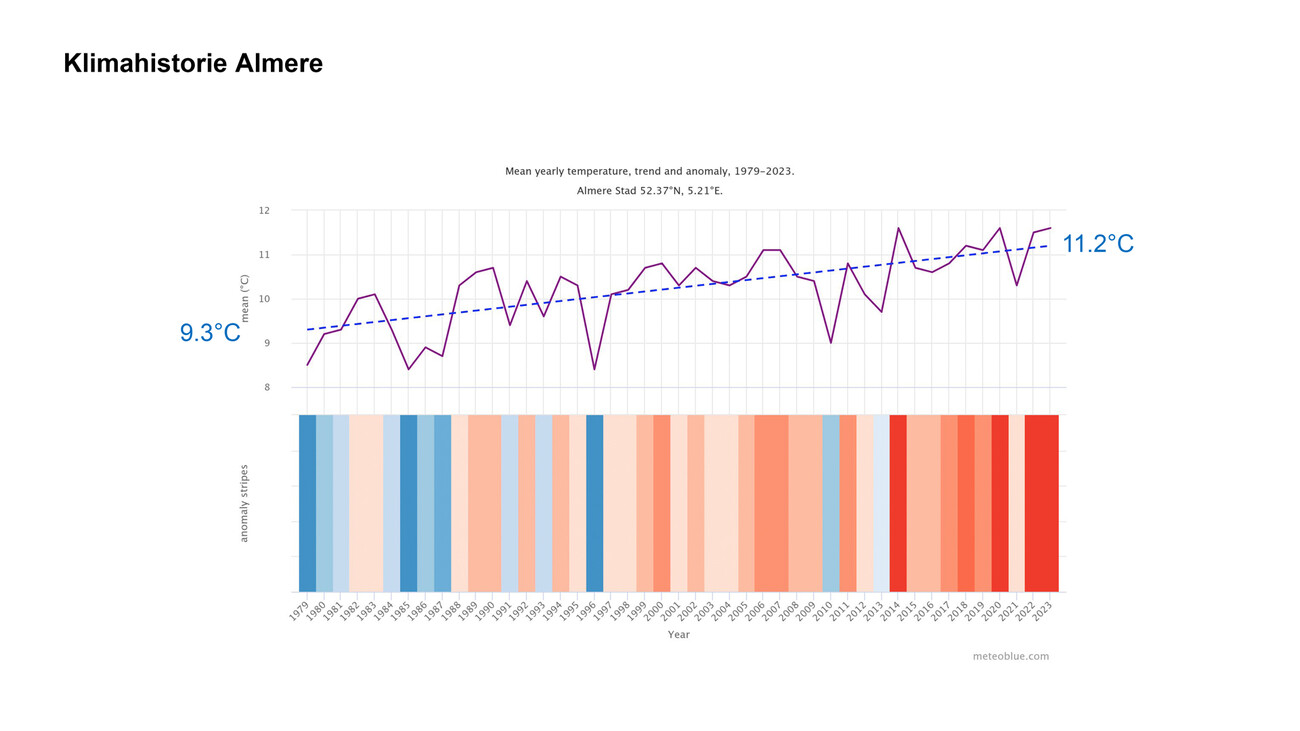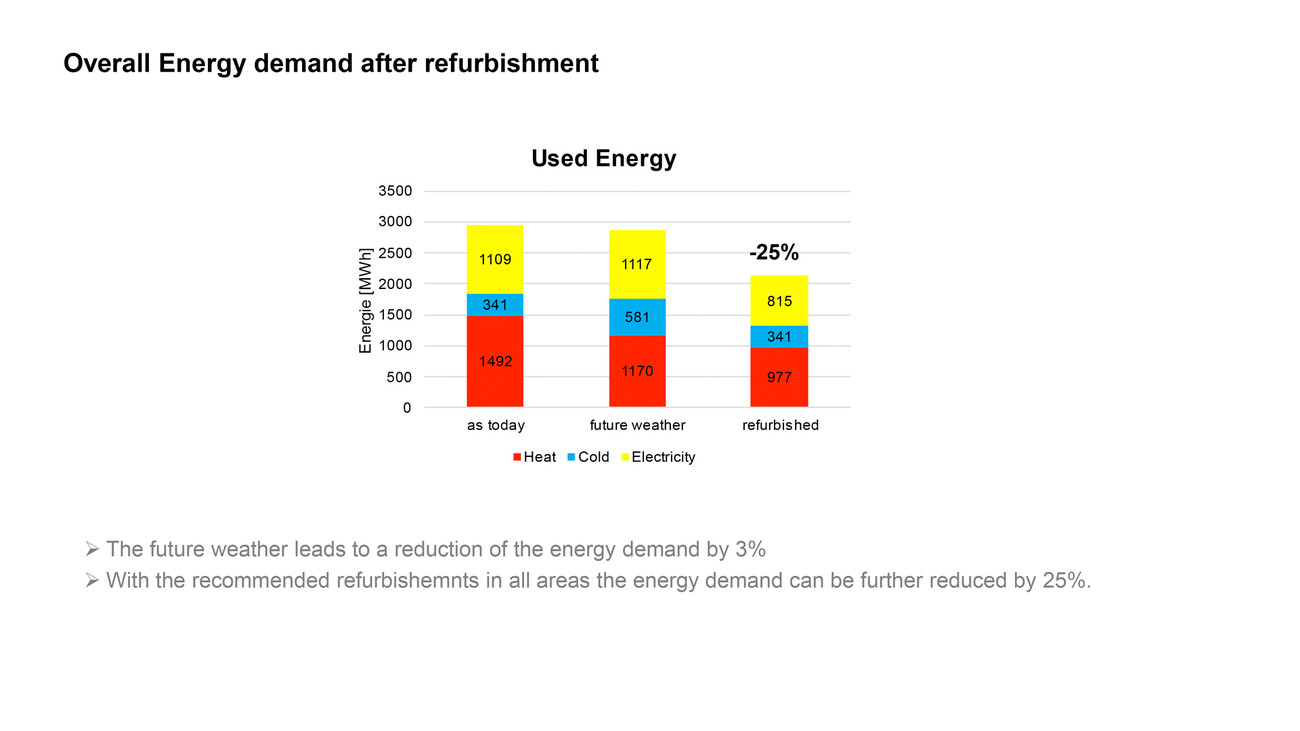Energy-efficient Refurbishment Almere Kunstlinie, Almere, Netherlands

The Almere Flevoland Kunstlinie opened in 2007 and is in the center of Almere directly on the “Weerwater.” It offers theaters and concert halls with a total of 2000 seats, an art exhibition, a music school as well as the offices of all the operators. The special architecture was designed by Kazuyo Sejima and Ryue Nishizawa from the Japanese architecture firm SANAA - their first project in Europe. Except for the theaters and concert halls, the entire exterior façade is made of glass. Transsolar was asked to develop measures which could be easily incorporated in the concept for an energy-efficient renovation and to reduce the carbon footprint of the building's operation. The proposals served as a basis for the municipality's decision.
At the time of the study, there were major overheating problems and significant daily temperature fluctuations were observed. These conditions place considerable stress on musical instruments in the school and limit the safe display of sensitive artworks in the exhibition area.
Transsolar recorded the condition of the building envelope and the installed HVAC systems, as well as comfort and energy consumption data. Transsolar recorded the condition of the building envelope and the installed HVAC systems, as well as comfort and energy consumption data. The energy consumption of the existing building was analyzed in detail including a simulation model that accurately reflects current consumption. A weather data forecast for the year 2050 was used to evaluate refurbishment scenarios. It is expected that around 30% less heating will be required, but significantly higher demand for cooling (+60%). In terms of heating and cooling, the “Kunstlinie” already uses natural resources via an aquifer heat pump but is also connected to the local district heating network.
The focus of the renovation is to improve summer comfort while avoiding external solar shading due to wind conditions. Transsolar recommends automating the internal solar shading and extracting the air that heats up in the gap between the glass and the solar shading from above the gap. This principle has already been demonstrated in the Continental Headquarters project in Hannover, Germany. It reduces the input of solar energy by up to 60%. A positive side effect is the improved distribution of the conditioned supply air, especially in the art exhibition.
In the offices, efficient ceiling sails are recommended for cooling instead of the previous full air-conditioning. In addition, there is great potential for energy savings in the implementation of a CO2-controlled ventilation system, especially in the foyers, as well as in the complete conversion to LED lighting with daylight or presence-based control. For the heating and cooling supply, Transsolar suggests optimizing the use of aquifers with the reduced loads. All surface heating systems should be supplied directly from the heat pump instead of mixing high-temperature district heating down to 35°C/95°F. This increases the heat extraction from the groundwater and thus enables increased use of the aquifer for cooling in summer. Maintaining heat balance of the aquifer is mandatory. Only the ventilation systems and individual radiators must continue to be supplied via district heating. The refurbishment and optimization measures significantly improve comfort and achieve an overall reduction in emissions during operation of 40%.
After refurbishment and with optimized aquifer use, solar power production of 970 MWh per year is required to cover the entire electricity demand for building operation in the annual balance and to offset the emissions caused by district heating. A climate-neutral building in operation is possible if only 65% of the roof area is activated with PV, which SANAA accepts despite the high aesthetic demands on the roof - the "5th facade" of the project.



